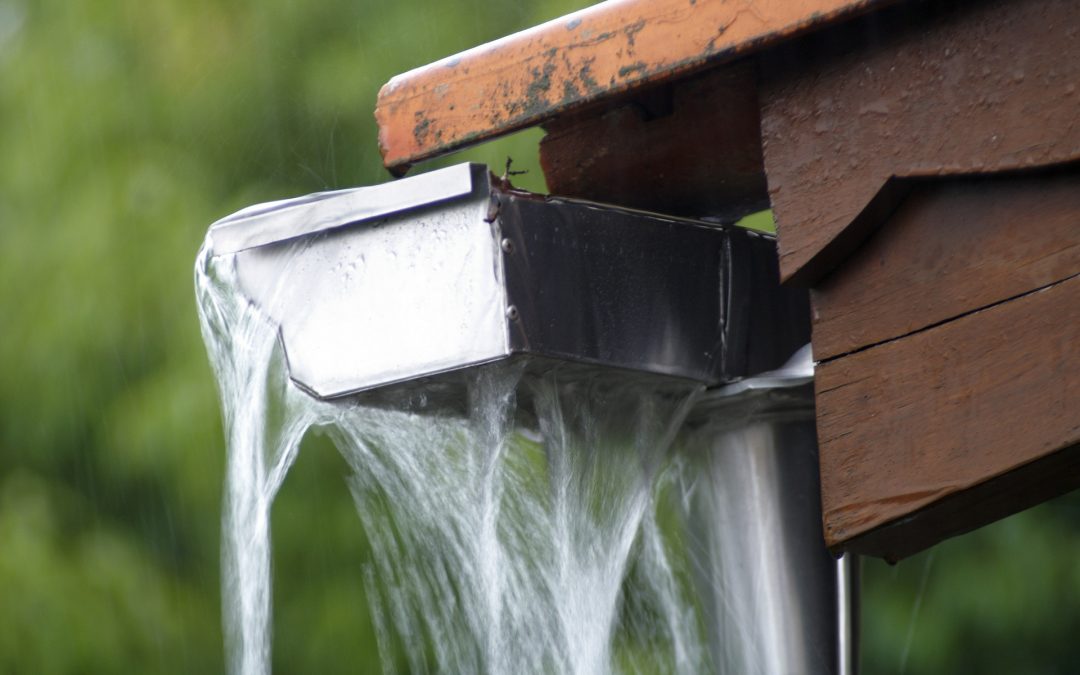Like your gutters, your downspouts play a critical role in diverting precipitation away from your home. Functional downspouts are essential in protecting your home and landscape from water damage.
The Importance of Properly Working Downspouts
Downspouts ensure that the rainwater from the gutters is routed into drains, instead of landing near the house perimeter, or worse, near the house’s foundation. Too much water near the foundation can result in the following:
- Increased Soil Moisture Levels — Pooling rainwater gets absorbed by the soil, which can result in an imbalance in the soil moisture levels. If the house settles unevenly, it could lead to the house gradually—and quite literally—splitting in two. If this happens, you will notice signs such as large cracks in load-bearing walls, uneven flooring and hard-to-open doors and windows.
- Damage to the Foundation — Most types of foundation are made of concrete. Properly installed house foundation is wrapped in waterproofing material to avoid moisture absorption. However, it is entirely possible for moisture to infiltrate this barrier. Too much moisture can make concrete brittle, resulting in cracks or even greater damage to the foundation.
- Flooded Basement — Water near the basement can seep through the walls and windows. Whether you have an unfinished or converted basement, you do not want water to linger in the basement. Cleaning up after a flood is bad enough; the sudden increase in basement humidity is even worse. It can lead to mold and mildew growth, as well as damage to the drywall and other structural parts.
These three problems are just a few examples that illustrate the importance of maintaining properly working downspouts. Let’s now take a look at some of common downspout problems.
Clogged Downspouts
Clogged downspouts are caused by the same things that cause clogged gutters. Leaves, debris, animal droppings and loose roofing granules are just a few of the things that can collect in the gutters. If you take protective measures such as regular cleaning and maintenance, as well as installing a gutter protection system from Gutter Boyz of Kentucky, obstructions within the downspout will be far less common. Unfortunately, such obstructions are easy to miss, since they’re out of sight.
Obstructions within downspouts usually form gradually, similar to accumulated detritus that block kitchen drains. All it takes is an object—a twig, a stiff leaf a clump of animal hair—to be caught in a joint, seam or bend. Smaller pieces of debris will then accumulate over time until a noticeable obstruction has formed. Here are some of the signs of clogged downspouts:
- Overflowing Water in the Gutters — Overflowing rainwater doesn’t always indicate clogged downspouts. Nevertheless, gutters shouldn’t overflow unless rainfall is unusually heavy. If the gutters turn out to be clean yet are still overflowing, the problem may lie in the downspouts.
- Leaking Seams — Clogs in the downspout can exert pressure if they occur near the seams. Old and worn-out sealant can be dislodged by the water in the downspout, resulting in “weeping” seams. If your gutters are up for replacement, consider investing in seamless gutters from Gutter Boyz of Kentucky.
- Weak Runoff — If the runoff seems to be a little more than a trickle during moderate rain, something in the gutters must be causing a bottleneck. One way to check for a major blockage is to tap the downspout along its length. Obstructed areas will have a different sound when you tap them.
Downspouts Are Too Narrow
A properly designed gutter system isn’t likely to have undersized downspouts. During the design stage, a skilled gutter contractor will consider several factors before determining the final gutter specifications. Calculating the right gutter size requires accounting for these three factors:
- Roofing Square Footage — This is the actual roofing area. Often this information is available in the roofing installation plans. If this information is not available, gutter contractors measure the area manually, plane by plane.
- Roof Pitch Factor — The steeper the roof, the more rainwater it can collect. Gutter and roofing contractors follow standardized factors that correspond with roof pitches. A roof with a 12/12 slope (12 inches of rise for every 12 inches of run) has a factor of 1.3. At the other extreme, roofs with 3/12 or lower have a roof pitch factor of 1.
- Maximum Rainfall Intensity — This information is provided by the National Weather Service. This denotes the strongest recorded rainfall in the area, measured in inches per hour. Different areas in the same city can have different maximum rainfall intensities.
If your home or business is experiencing gutter problems, give us a call at Gutter Boyz of Kentucky. Gutter Boyz of Kentucky specializes in all things gutters. Whether you need new seamless gutters, gutter repair, gutter cleaning or gutter guards, give Gutter Boyz of Kentucky a call today at (270) 906-3055 or CLICK HERE to contact us today!

